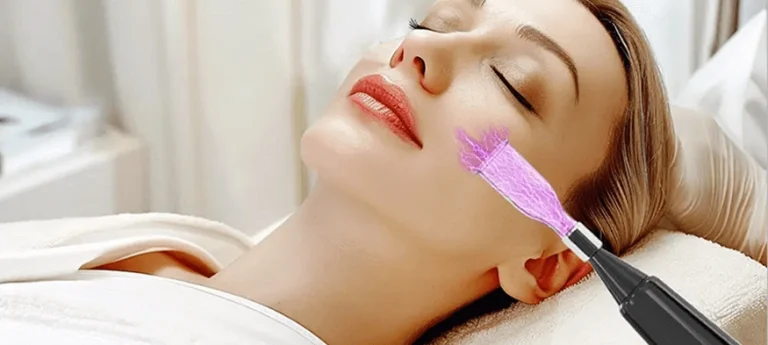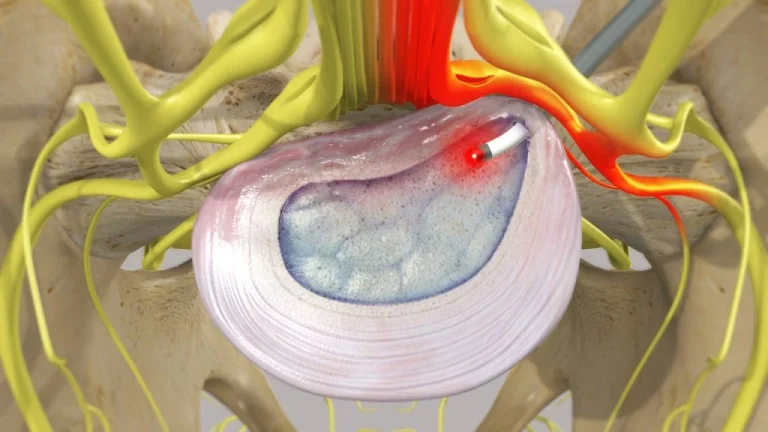What is Endovenous Laser Ablation (EVLA)
Endovenous laser ablation (EVLA) is a minimally invasive treatment for major varicose veins previously treated by stripping surgery. With ultrasound guidance, a laser fiber is placed into the abnormal vein through a tiny incision. The vein is then numbed with local anaesthetic, and the laser activated as the fibre is slowly removed. This produces a reaction in the vein wall along the treated section, resulting in collapse and sclerosis of the vein wall with minimal discomfort.

What are the Advantages of EVLA?
Endovenous thermal ablation seals off varicose veins but doesn’t remove them. This means you’ll have a faster recovery time and a lower risk of complications. It offers less pain, fewer complications, minimal scarring, and excellent cosmetic results—often better than traditional surgery. Both legs can be treated in one session, and surface varicosities are treated simultaneously using ultrasound guided sclerotherapy.
What to Expect from the EVLA Laser Treatment
A duplex ultrasound is used to map out your vein. Local anaesthetic is then applied. A thin laser fiber is inserted through a tiny entry point, usually near the knee. Laser energy is delivered to seal the faulty vein. Walking immediately after the procedure is encouraged. Normal daily activity can be resumed right away – just avoid rigorous activities such as gym workouts.
Is Endovenous Laser Ablation Painful?
You’ll receive anesthesia for endovenous thermal ablation, so you won’t feel any pain. A regional nerve block and tumescent anaesthesia is strategically placed along the saphenous vein, which numbs the area.
EVLA Laser Treatment Step by Step

A diode laser fiber is passed into the abnormal vein, through a tiny key-hole incision. The laser fiber is then passed up the entire vein and secured next to the leaky valve. Intense heat is emitted from the tip of the laser fiber, which is gradually withdrawn from the vein. As it’s pulled out, it heats the blood within, sealing it shut.
Clinical Applications of EVLT/EVLA Laser
Treatment Ablation
In the EVLT/EVLA procedure, the surgeon utilizes ultrasound imaging to locate the target vein. The veins suitable for treatment include the primary venous trunks in the legs, such as the Great Saphenous Vein (GSV), the Small Saphenous Vein (SSV), and their significant tributaries, like the Anterior Accessory Saphenous Veins (AASV).
The 1470nm diode laser energy is preferentially absorbed in the intracellular water of the vein wall and in the water content of blood. The irreversible photo-thermal process induced by the 1470 laser energy results in a complete occlusion of the treated vein. The lower energy level needed using the radial laser fiber round tip significantly minimized adverse effects compared with the bare laser fiber.
 What Should You Do Before EVLA?
What Should You Do Before EVLA?
Do not cease medications prior to treatment unless otherwise advised. Do not shave your legs immediately prior to your treatment or apply moisturiser on treatment day. Wear slacks or loose trousers and comfortable walking shoes. If you have a low pain threshold, take 2 paracetamol or Ibuprofen tablets with food before your appointment.
What Happens During EVLA?
A sonographer or doctor will mark out the vein(s) to be lasered. A localised nerve block will be performed to anaesthetise the area of treatment. You’ll lie comfortably depending on which saphenous vein is being treated. A small catheter is introduced through a small needle into the diseased vein. The laser fibre is inserted through this catheter under ultrasound guidance and connected to a 1500 nM laser machine. Tumescent anaesthetic fluid surrounds the targeted vein before activating and withdrawing the laser fiber using an automatic pull-back device—completing treatment painlessly.
What Happens After EVLA?
Class 2 compression stockings are applied post-treatment. Patients must walk for 20–30 minutes immediately before driving home if able to walk unaided. Stockings should be worn overnight for one night and daily for at least 14 days thereafter (excluding sleep/shower). Walking 30 minutes daily is mandatory while avoiding prolonged standing or long-haul flights for three to four weeks post-treatment unless otherwise approved by your physician.
What Can You Expect Following EVLA?
Mild to moderate pain may persist for one to two weeks along the lasered vein. This discomfort should be managed with walking, rest (with leg elevation), anti-inflammatory medication like Nurofen or Voltaren, and consistent stocking wear. Phlebitis or inflammation may occur along areas where veins were lasered—again treatable with anti-inflammatories and compression therapy as needed under physician supervision.
What are the Possible Complications from EVLA?
Deep vein thrombosis and pulmonary embolism are rare but possible complications. Nerve damage may occur—especially if treating below-the-knee saphenous segments—but typically resolves within weeks or months without intervention. Skin burns are reported in literature but have not occurred in our practice due to precise technique and safety measures used during endovenous ablation procedures.
What Standards and Guidelines Are in Place for Practitioners in Phlebology?
Practitioners performing endovenous ablation must follow strict standards and guidelines established within phlebology practice frameworks ensuring patient safety, procedural efficacy, and ethical clinical conduct throughout diagnosis and treatment processes.
Varicose Veins Treatments
The EVLT procedure begins with an interventional radiologist inserting a catheter into the varicose vein. Using ultrasound to see inside the patient, the doctor guides the catheter through the vein. A laser at the end of the catheter heats the walls of the vein, which closes it. This causes blood to stop flowing through the vein. EVLT/EVLA treats varicose veins using 1470nm laser energy that collapses affected veins without surgery—allowing blood flow rerouting via healthy vessels while eliminating bulging symptoms at their source efficiently and safely.
Overview Arfurla EVLT/EVLA of Multifunction Medical 12 in 1 Diode Laser Machine

Arfurla’s multifunctional medical diode laser machine integrates 980nm/1470nm wavelengths supporting various clinical applications including endovenous ablation (EVLT/EVLA), lipolysis body contouring treatments, hemorrhoid therapy (HeLP), spider veins removal, ENT & gynecology procedures—all within one compact platform.
Its advanced radial fiber design ensures even energy distribution across targeted tissue with minimal thermal damage while CE-certified components uphold European safety standards across all applications.
Frequently Asked Questions about Endovenous Laser Ablation
How does EVLA work?
The laser energy damages vein walls causing them to shrink and close off faulty blood flow pathways—resolving visible bulging at its root cause.
Is loss of treated veins problematic?
No—the body naturally redirects blood through healthy vessels after closure without issue.
Am I at risk from lasers?
No—you’ll wear protective eyewear during treatment as added precaution against accidental exposure outside intended application zones.
Further Patient Information Endovenous Laser Ablation
Arfurla offers high-quality diode lasers tailored specifically for phlebology including their flagship AFL Medical 12-in-1 system supporting customizable OEM/ODM configurations globally backed by ISO9001:2015 certification.
Their comprehensive support includes pre-sales consultation, lifetime technical maintenance services post-purchase—even decades later—and continuous training resources ensuring safe adoption across clinical environments worldwide.



